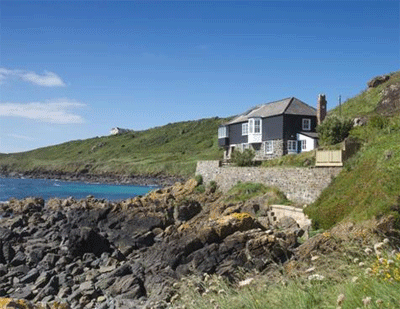Cornish house for sale with unrivalled sea views
The Watch House was built to house excise men whose job to catch smugglers so it’s no surprise the sea views are exceptional

Dating back to the 18th century, The Watch House was originally built to house the local excise men whose job it was to catch smugglers. It was eventually taken over by the Coastguard Service in the 1820s and has been a private house since 1925.
Located literally yards from the sea but protected by its own reef, the house has a commanding position overlooking the sea. The property has been sympathetically restored whilst maintaining its original character. Pine and oak floors and traditional panelling remain; accommodation comprises kitchen, dining room, sitting room, four bedrooms and two bathrooms.

* Country Life makes a fantastic Christmas present: Give Country Life for Christmas this year and save up to 30%
The house stands in its own plot of a third of an acre with terraces to the front and the majority of the grounds to the rear. A wall protects the house from the sea and the rocks below provide excellent rockpools when the tide is out. The Cornish Coastal Path passes the gate affording marvellous walks in both directions.
The Watch House is located in the unspoiled Cornish village of Coverack which has a picturesque 18th century harbour and a safe sandy beach. There are good local shops and regular events on the village green. Helson (seven miles) has good connections to London Paddington by train.
The guide price is £975,000. For further information please contact Knight Frank on 01392 423 111 or visit www.knightfrank.co.uk.
Sign up for the Country Life Newsletter
Exquisite houses, the beauty of Nature, and how to get the most from your life, straight to your inbox.
* Country Houses for sale in Cornwall
* Follow us on Twitter
-
 Six rural properties with space, charm and endless views, as seen in Country Life
Six rural properties with space, charm and endless views, as seen in Country LifeWe take a look at some of the best houses to come to the market via Country Life in the past week.
By Toby Keel Published
-
 Exploring the countryside is essential for our wellbeing, but Right to Roam is going backwards
Exploring the countryside is essential for our wellbeing, but Right to Roam is going backwardsCampaigners in England often point to Scotland as an example of how brilliantly Right to Roam works, but it's not all it's cracked up to be, says Patrick Galbraith.
By Patrick Galbraith Published
